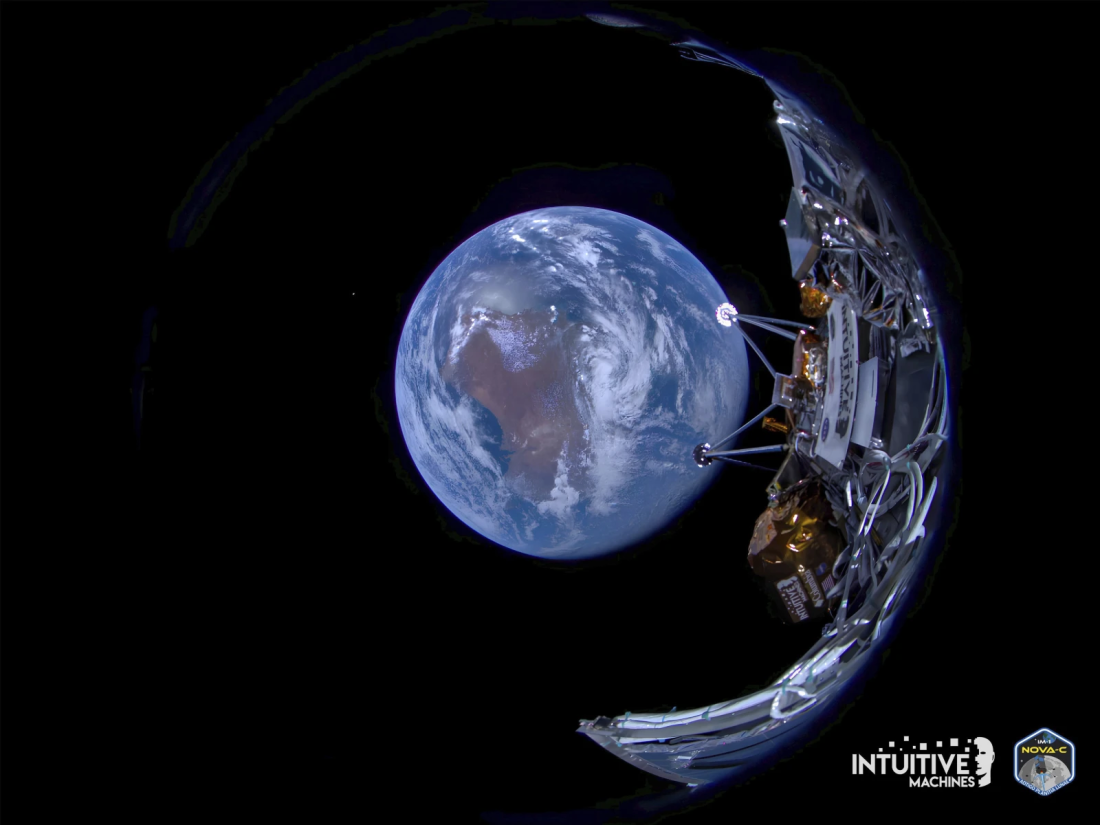
In a historic achievement, a private lander marked the first U.S. touchdown on the moon in over half a century on Thursday. The groundbreaking moment, orchestrated by Intuitive Machines, however, was initially overshadowed by communication challenges, requiring flight controllers to swiftly rectify the situation for better contact.
Despite initial communication setbacks, Intuitive Machines confirmed the successful landing of its craft, known as the Odysseus lunar lander. While details regarding its precise location near the moon’s south pole were scarce, the company assured that the lander had touched down upright. The live webcast from the company’s Houston control center was concluded shortly after a lone, weak signal was received from the lander.
Mission director Tim Crain affirmed, “What we can confirm, without a doubt, is our equipment is on the surface of the moon,” as tension mounted in the control center. Intuitive Machines CEO Steve Altemus echoed the sentiment, stating, “I know this was a nail-biter, but we are on the surface and we are transmitting. Welcome to the moon.”
Approximately two hours post-touchdown, data began streaming in, marking a significant breakthrough for the mission. The successful landing not only reinstated the U.S.’s presence on the lunar surface since NASA’s Apollo missions but also established Intuitive Machines as the first private entity to accomplish a lunar landing—a feat previously achieved by only five countries.
NASA Administrator Bill Nelson hailed the achievement, tweeting, “Intuitive Machines ‘aced the landing of a lifetime.'”
The final moments leading to touchdown were fraught with tension as the lander’s laser navigation system malfunctioned. A last-minute switch to an experimental NASA laser system was deployed, necessitating an additional orbit around the moon to facilitate the change.
The mission’s target area, located approximately 186 miles shy of the moon’s south pole, held strategic importance due to its proximity to potential water resources. The Odysseus lander aimed for a relatively flat terrain surrounded by rugged features that could potentially harbor frozen water—a key aspect of lunar exploration.
Intuitive Machines’ successful lunar touchdown joins a series of recent endeavors by various nations and private entities seeking to explore and utilize lunar resources. With Japan’s recent lunar landing adding to earlier triumphs by Russia, the U.S., China, and India, the quest to unlock the moon’s potential continues.
The Odysseus lander, equipped with NASA’s tech and navigation experiments, also carried payloads from Columbia Sportswear, sculptor Jeff Koons, and Embry-Riddle Aeronautical University, showcasing the diverse applications of lunar exploration beyond scientific research.












